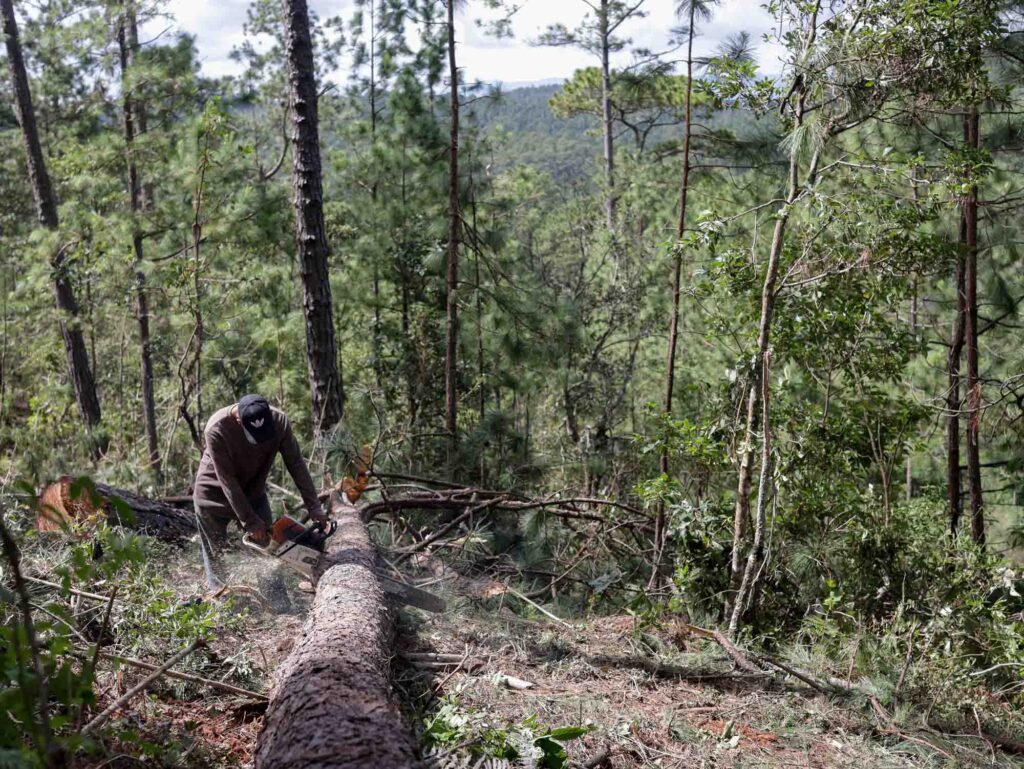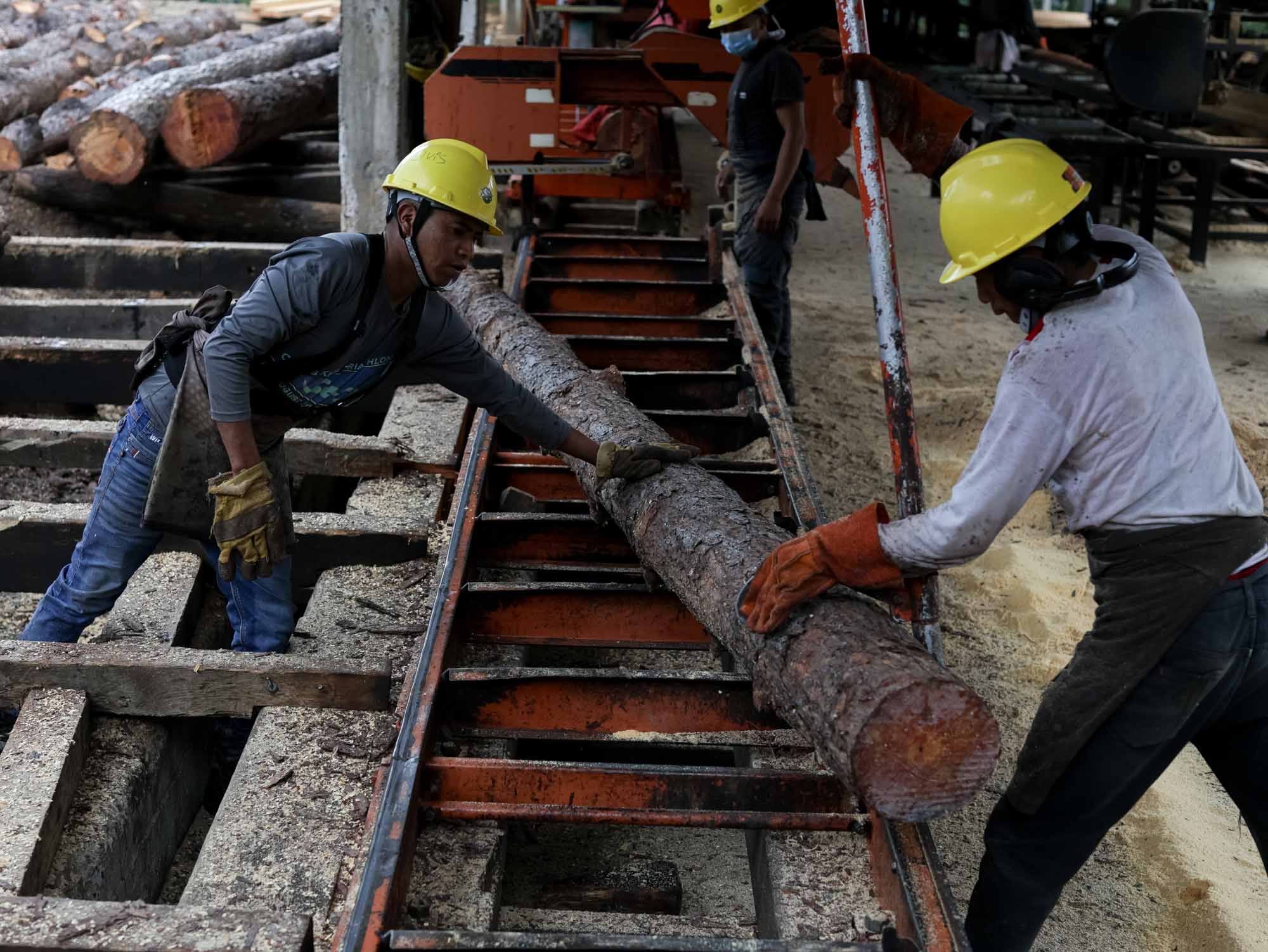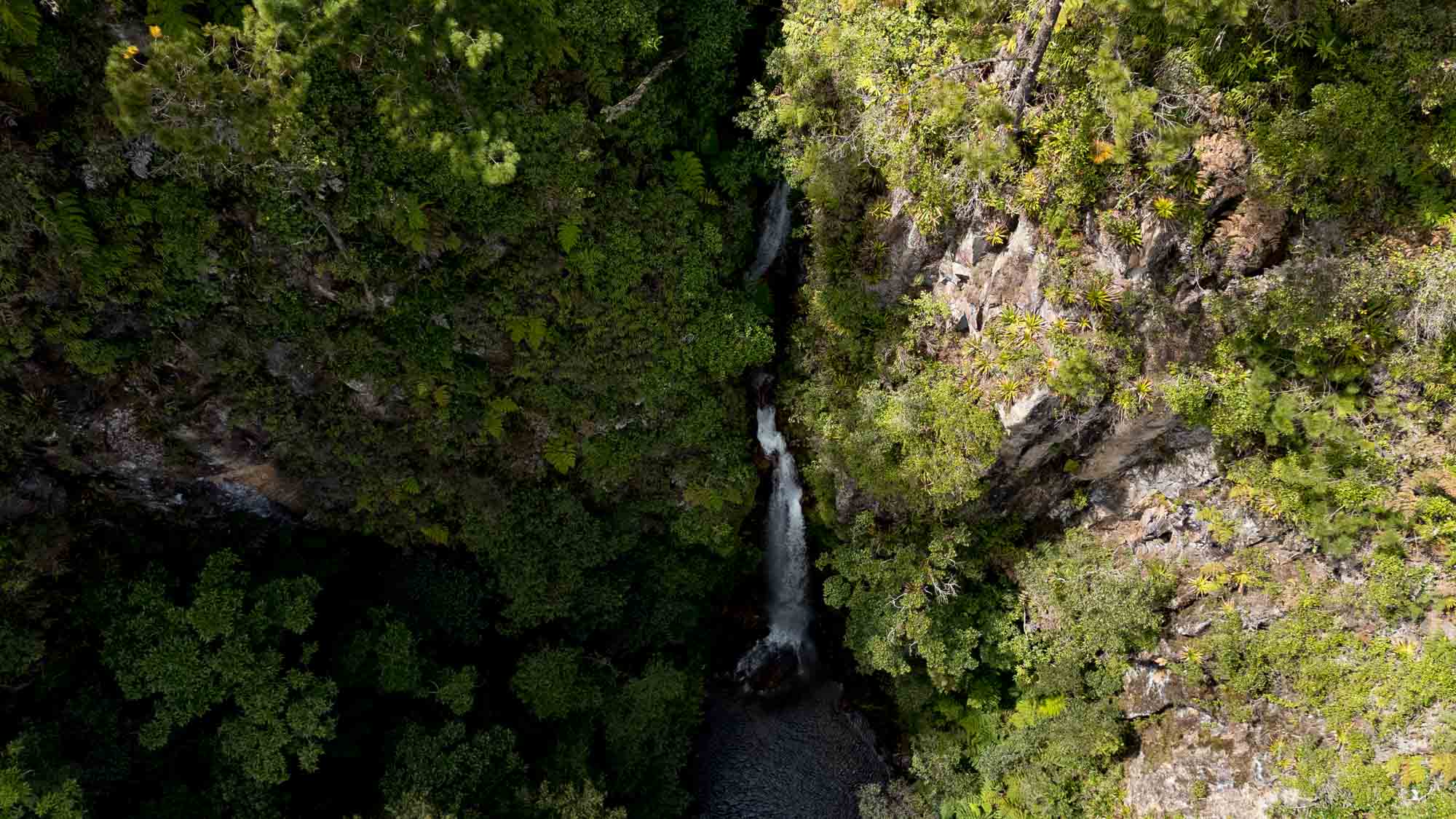FEPROAH: Living from the forest while protecting the future

A pair of oxen hauls the log of a large pine tree down the slopes of a mountain in the department of Intibucá, Honduras. Then, two people roll it onto a truck, which will transport it a couple of kilometers to the Agroforestry Cooperative El Palizal.
That tree, like many others, was grown in the cooperative’s nursery, which sees the forest as both a home and an opportunity to sustainably use its resources while preserving it.
Next to the sawmill, the logs lie side by side, waiting for their turn to be processed. A group of young community members is responsible for cutting the wood, while others collect sawdust in sacks, and some transport lumber to the warehouse for storage. On the opposite end, several people carry planks to take them to market. In the distance, on a small hill, the nursery stands with young trees, waiting for their turn to return to the forests.
The cooperative operates like a well-oiled machine, ensuring that the cycle of resource use is respected. The cooperative’s president, Mercedes Bautista, explains that they work with an operational plan to obtain raw materials from the forests of Yamaranguila, the municipality where they are located.
Their method for sustainable resource management follows the 3×1 approach: for every tree cut down, the cooperative must plant three to ensure forest conservation.
“We also support communities when they request seedlings. We grow gavilea, pine, and tatascán trees in the nursery,” says Bautista.
A forest to work
Founded in 2001, the cooperative employs 30 members and indirectly benefits around 150 people in the community. It is also part of the Federation of Agroforestry Producers of Honduras (FEPROAH), which aims to strengthen organizational structures and improve access to financing for community-based forest management.

Through FEPROAH, a member organization of AMPB, the Mesoamerican Territorial Fund (FTM) has supported the cooperative by helping maintain the nursery and creating opportunities for training cooperative members as well as other organizations.
To consolidate the participation, self-management, and sustainability of Indigenous Peoples and Local Communities in Mesoamerica, the FTM has allocated $60,000 to its 10 member organizations.
“The fund has supported us a lot. For example, in the community of Horconcitos, we have a group of 17 women working in agroforestry nurseries. We also had a gastronomy workshop and a great opportunity to attend an entrepreneurship workshop, where we received training in financial topics,” explains FEPROAH president Amalia Hernández.

This type of financing is crucial for people like Rosemary Valencia. She is the cooperative’s administrator and one of the many young people from the community who work there, as job opportunities in Yamaranguila are scarce. According to Rosemary, strengthening the cooperative is vital for several reasons: it prevents young people from migrating in search of work and contributes to forest conservation.
“Some members work with pine handicrafts, so I believe we should continue training them so they can grow. The same goes for the nursery—we should keep training the newcomers. The more knowledge we have, the better,” says Rosemary.
A fight against deforestation
The forests of Yamaranguila are threatened by illegal logging. Mercedes explains that those who cut down trees without an operational plan sell the wood at much lower prices in the market, jeopardizing the cooperative’s long-term sustainability.
However, forest loss is not just a problem in Yamaranguila. About three hours away by car, in the Montecillos mountain range—home to extensive pine and cloud forests—the expansion of agricultural land is a growing threat.

The road to Montecillos winds through the mountains from Comayagua, flanked by maize fields, coffee plantations, and peach orchards for much of the journey. In the communities near the summit, several burned pastures can be seen where forests once stood, now cleared for farming.
Celan Gutiérrez, regional president for the protection of forests and water sources in Montecillos, recalls that water shortages began in April, raising alarm in the community.
To address this issue, several communities have organized to protect the forests and the water supply for 17 neighboring villages. Their solution? Raising funds to buy land.
“The only viable idea we’ve found as a community is to protect the land ourselves by purchasing plots from landowners who previously used them for maize farming,” Celan explains.
As you walk deeper into the mountains, pastures and coffee plantations give way to dense forests, rivers, and waterfalls.

The neighboring communities of the Montecillos Mountain Range began to notice a water deficit during the summer, so they decided to protect the watersheds through reforestation.
So far, they have purchased 48 hectares, preserving primary forest while allowing former pasturelands to regenerate into secondary forest. Their efforts, Celan affirms, have inspired other neighboring communities to take similar actions.

To continue acquiring land, they need more financing, as government support remains limited. This is a concern shared by Amalia Hernández.
“What’s needed is broader financing to ensure that these initiatives don’t stall halfway but rather that these young people can continue to thrive in their communities. The forest is there, the community is there, the challenges are there, but these people who have started receiving training must have the means to keep going,” says the FEPROAH president.
